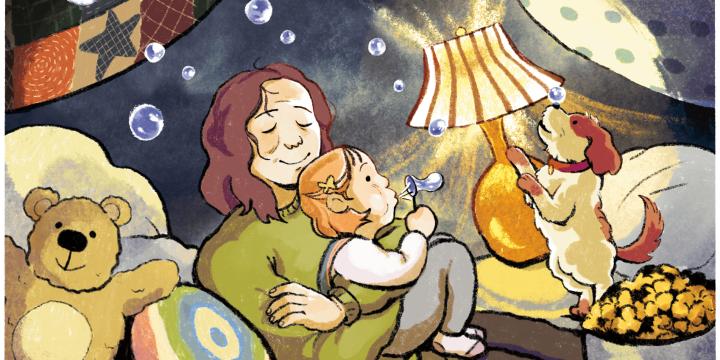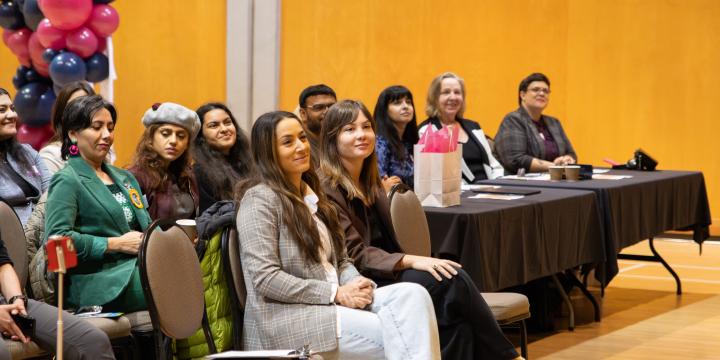
Halloween: A Day of Heightened Risks for Women, Girls and Gender-diverse Folks
As we grow older, Halloween evolves from a time of family-fun with candy and dress-up, to a good time with friends with haunted houses, parties, music and entertainment. However, anonymity behind costumes, increased alcohol consumption during festivities and a culture of sexualization can pose an increased risk for violence.
This post aims to educate and serve as a resource to stay safe and have fun during your Halloween celebrations. We will be talking about the heightened risk during this day, how to plan ahead, staying safe and what you can do as an active bystander when you notice predatory behaviour.
Anonymity, Intoxication and Sexualization Contributes to a Heightened Risk
While there may be a variety of reasons why there are risks during Halloween, anonymity and disguises play a major role. When people feel like they’re anonymous, it creates a false sense of freedom from rules, laws and accountability for their actions. In addition, there is a 25% increase of alcohol consumption during Halloween according to the Alcohol Monitoring System. Intoxication culture, toxic masculinity and the objectification of women, trans and gender-diverse folks often go hand in hand. This culture often leads to risky behaviour, and can be a catalyst for violence, non-consensual behaviours and abuse, including sexual violence.
The media portrayal of Halloween and the promotion of sexualized costumes also reinforces the culture of sexualization. Sexualization causes individuals to be depicted or treated as sexual objects. It also normalizes sexual violence and causes misconceptions about what is consensual and acceptable behaviour. There are plenty of stories of people being stalked, harassed, grabbed or touched without permission and cat-called. In fact, 32% of women over 15 years old in Canada have experience some form of unwanted sexual behaviour while in public, according to Statistics Canada. Women, girls, trans, non-binary and gender-diverse folks are far more likely to experience and or be impacted by unwanted sexual behaviour and sexual assault, and it is not okay.
Staying Safe
Planning ahead
It can be easy to lose track of friends in big crowds during Halloween, and especially when many are wearing costumes. It is important to keep an eye out and plan ahead to ensure that you and your friends are safe while having fun. Here are some things to consider:
- Plan ahead and work out how you’re going to get home.
- Keep an eye on your friends. Decide beforehand to look out for each other and don't leave them unattended. If things take a turn for the worse, move away from situation.
- Have a plan of action if someone becomes drunk or ill. This might involve arranging for them to get home safely, or calling emergency if they’re seriously ill.
- Watch out for predatory behaviour.
- Don’t get into a verbal argument if someone aggressively confronts you. Walk away.
- Trust your gut. Leave for somewhere safe if you feel unsafe at a venue or party.
- Don't accept drinks from strangers, don't leave drinks unattended and cover your beverages. during conversations in a public space.
- If you feel dizzy or sick, ask someone you trust to take you to a safe place.
- Don’t get into a car with a driver who is intoxicated.
- Don’t go off with a person you’ve only just met. Stay in the public place.
- Call the police if you feel that a situation is beyond your control.
Identifying predatory behaviour and being an active bystander
Halloween parties, dances and gatherings: While parties aren’t the only place where people can experience predatory behaviour, it is a frequent setting where risky behaviour, sexual harassment and assault takes place. Sometimes predatory behaviour can go unnoticed or are hard to identify, so make sure to always trust your instincts and check up on others to see if they are okay.
When we are caught in situations where injustices, bullying or harassment are unfolding, we may need to quickly decide whether to intervene. It can be difficult to make that decision to step in even it’s the right thing to do. Before stepping in, assess the situation and see if it’s safe to help, or if there are risks. Remember, your personal safety is a priority. It is also recommended to buddy-up and intervene with a group. See below for ways to be an active bystander.
Remember the 5 D’s of Bystander Intervention
Direct action
Call out negative behaviour, tell the person to stop or ask the victim if they are OK. Do this as a group if you can. Try not to aggravate the situation. Remain calm and state why something has offended you. Stick to exactly what has happened, don’t exaggerate.
Distract
Don’t be afraid to interrupt and start a conversation with the perpetrator to allow their potential target to move away or have friends intervene. You can also come up with an idea to get the victim out of the situation – tell them they need to take a call, or you need to speak to them; any excuse to get them away to safety. You can also try distracting, or redirecting the situation.
Delegate
If you don’t feel safe to do so, get someone else to step in. Ask another friend or trusted adult or staff member to get involved.
Delay
If the situation is too dangerous and there is the threat of violence just walk away. Wait for the situation to pass then ask the victim later if they are OK. Or report it when it’s safe to do so – it’s never too late to act.
Document
It can be helpful for the target to have a video of the incident. If someone is already helping a person who is in crisis, you can document the situation by recording on your phone, or writing notes. Never post or share a video without the consent of the person being harmed. If the situation ends while you're present, ask the person harmed if they'd like a copy of the video and let them decide what to do with it.
Sonali Sharma is the Program Coordinator for YWCA Youth Education’s Dating Safe program.

